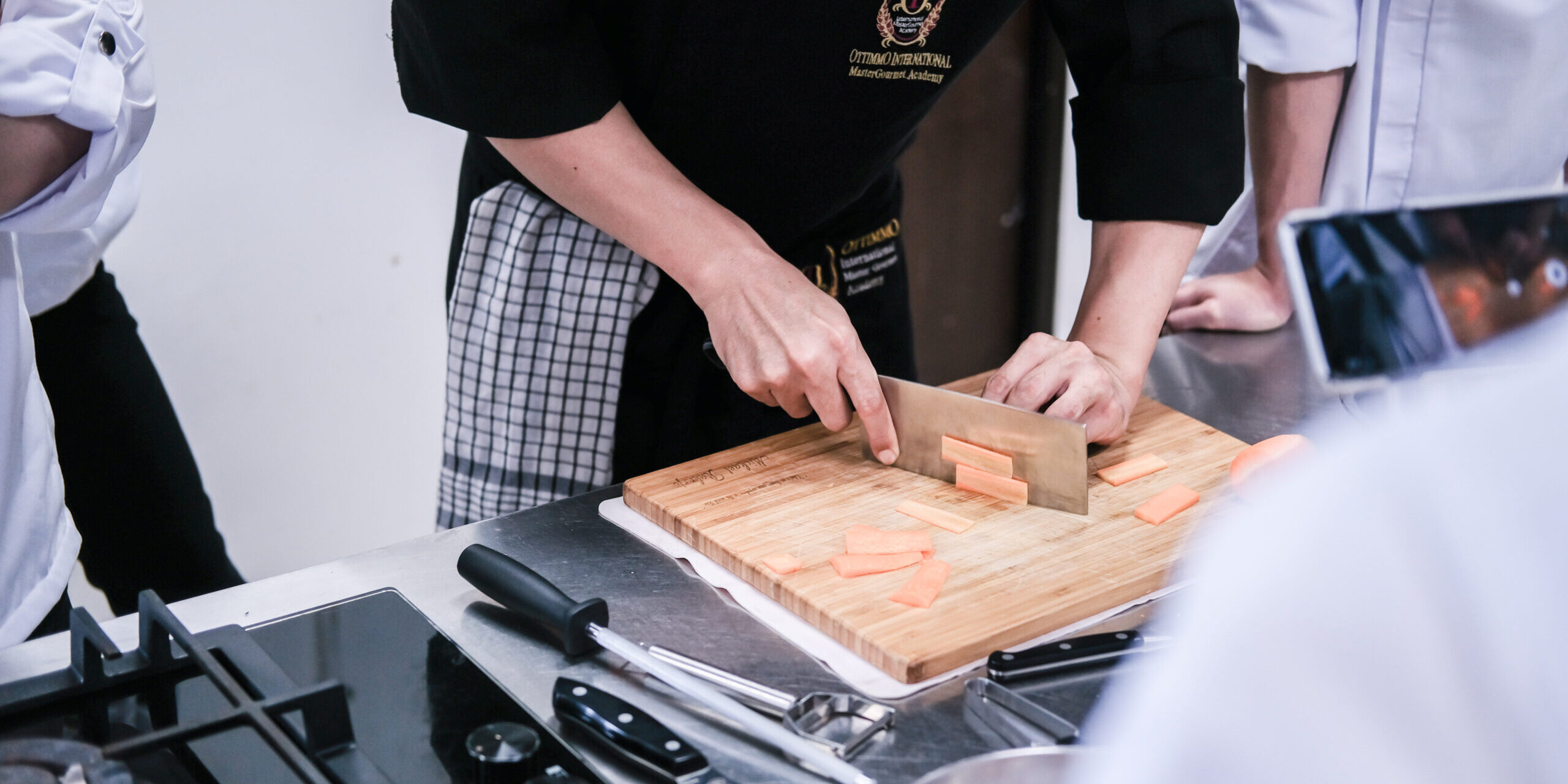I’m sure most of you can cook, and I’m willing to bet that your family really loves the food you make. Every cook needs to start with basic knife skills, long before you get the title of “certified chef.” These are not only tricks of the trade but also for your own safety. Join the elite group of chefs and educators at OTTIMMO Culinary Academy in Surabaya, because just reading about knife skills simply won’t cut it. Putting it into practice and having the guidance from a professional chef who cares will propel you in this industry.
Beginner’s Knife Skills Checklist
Knife-Holding
How Should You Hold Your Knife? The way you hold your knife will ensure your own safety and will help with knife control and accuracy. Simply wrap your hand around the handle and use your index finger and thumb to pinch the top of the blade.
Now that your cutting hand is established, the opposing hand that is holding the ingredients must be in a claw grip. Keeping the fingers curled under will protect them from an accidental slip-up, and this grip will give you more control over the ingredients.
Knife Position
Correctly Position Your Knife. You may be wondering why the position of my knife matters? Keeping the tip of your knife planted on the cutting board will improve your accuracy and prevent mishaps. Use an easy rocking motion with the knife going up and down.
Imagine a chaotic kitchen with people everywhere and a mountain of vegetables ready to be cut. You need to have a tried-and-true system that will get the job done efficiently and safely.
Slicing
How to slice? We can now discuss the first style of cutting. The slicing method is the backbone of your arsenal of techniques for kitchen production. Lay your ingredients flat on the cutting board and perpendicular to your knife.
As previously instructed, the tip of the knife should not leave the board. Feed the items with your free hand and slice your ingredients evenly so they cook uniformly. Different vegetables require various widths depending on the dish, just be mindful to keep everything consistent.
Dicing
Dicing is a similar technique in which you try to cut the vegetables into small, uniform square pieces. This skill is used daily in the kitchen. Depending on the recipe, large, medium, or small dicing may be required. The style is used to make mirepoix (celery, carrots, and onions) or salsa.
For further instruction, let’s use the onion as an example. Peel the onion and cut it in half so it lays flat. Make several incisions almost all the way through to the end, keeping it intact. Turn the onion 90 degrees and dice it into small, even pieces.
Chopping
Chopping is a skill that’s used for ingredients that don’t need exact precision, such as herbs or root vegetables. Employed to break down large ingredients into bite-size pieces.
It’s a looser style, which is why hand placement is ever-more important for your own personal safety. Once again, using the rocking technique will suffice.
Mincing
Mincing is similar to dicing in that it is concentrated into a smaller area. In the case of a garlic clove, slice it, peel it, then begin dicing. Gather into a stack and finely cut until it’s the size of salt grains. Used for aromatics such as garlic, ginger, and onions when a paste consistency is desired.
Cubing
Cubed vegetables are generally cut into 12 millimeter cubes. Often used with potatoes, carrots, meats, or bread. It’s popular for making potato salad or vegetable soup.
Julienne
To julienne (French Cut) a vegetable, cut it into five centimeter long segments, create a flat base by trimming off the uneven side. Slice through at three millimeters intervals, then stack evenly and slice parallel at another three millimeter intervals. The end result will be matchstick-sized pieces.
Chiffonade
This technique is primarily utilized when cutting leafy greens to create thinly sliced herbs for garnishes. Commonly used with basil, stack the leaves and roll them into a cigar shape. Secure it with your finger and finely slice it perpendicular; the result is ribbon-shaped, similar in texture to chopped green onions.
If you put these methods to use, you might be astonished at how much faster you can finish cooking and how consistently your meals will be prepared. Like anything else, it will become second nature with enough repetition. Why not attend OTTIMMO Culinary Academy to earn your international certification as a chef if you have aspirations of sharing your food with clients one day? You can study about pastry, desserts, business, in addition to honing your knife skills and learning about cleanliness and hygiene.








